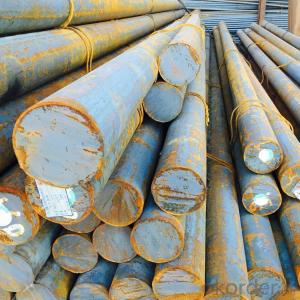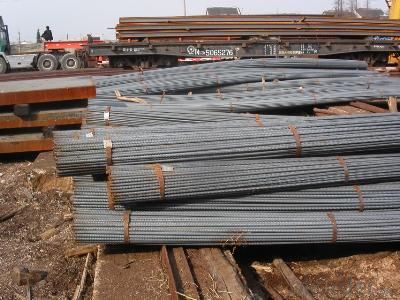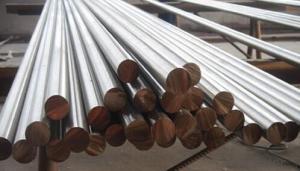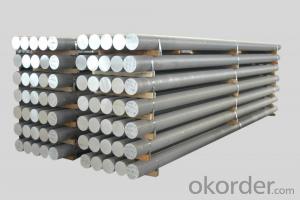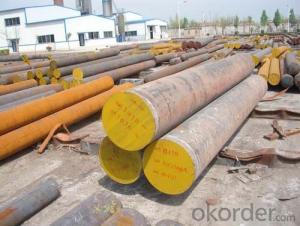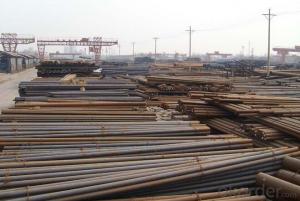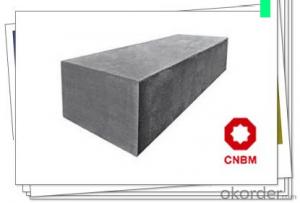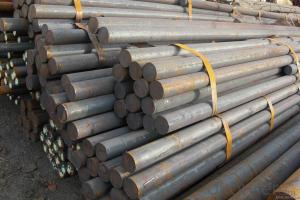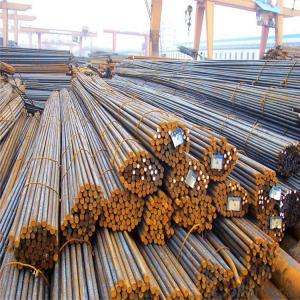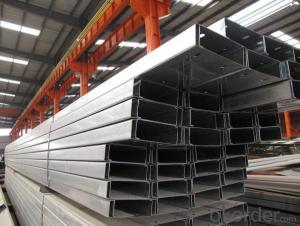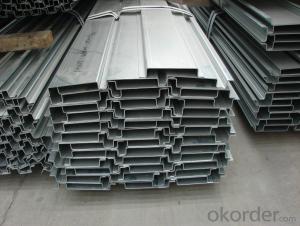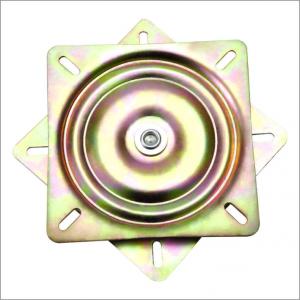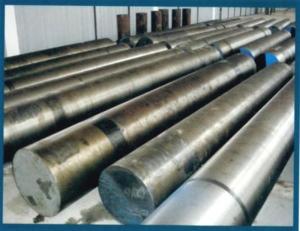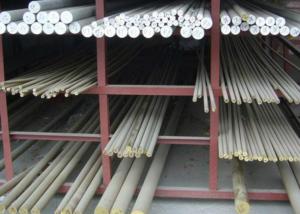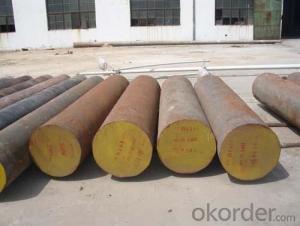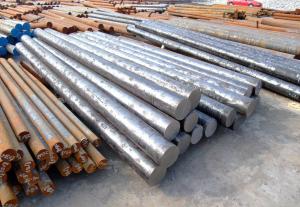Special Steel S45C Carbon Structural Steel
- Loading Port:
- China main port
- Payment Terms:
- TT OR LC
- Min Order Qty:
- 30 m.t.
- Supply Capability:
- 10000 m.t./month
OKorder Service Pledge
OKorder Financial Service
You Might Also Like
Specification
Product Information
1. Grade Comparison
GB | ASTM | JIS | DIN |
45# | SAE1045 | S45C | C45 |
2. Chemical Composition
Grade | C | Si | Mn | P | S | Cr | Cu | Ni |
45# | 0.42-0.50 | 0.17-0.37 | 0.50-0.80 | ≤0.035 | ≤0.035 | ≤0.25 | ≤0.25 | ≤0.30 |
S45C | 0.42-0.48 | 0.15-0.35 | 0.60-0.90 | ≤0.030 | ≤0.035 | - | ≤0.30 | ≤0.20 |
C45 | 0.42-0.50 | ≤0.40 | 0.50-0.80 | ≤0.045 | ≤0.045 | ≤0.40 | - | ≤0.40 |
1045 | 0.43-0.50 | 0.15-0.35 | 0.60-0.90 | ≤0.040 | ≤0.050 | - | - | - |
3. Brief Introduction:
Dimension | 13-350mm |
Length | 2-13m or as per your request |
Delivery condition | Hot rolled |
Heat Treatment | Normalizing, Annealing, Quenching |
Packing | Standard seaworthy packing or according to your requirements |
4. Application:
1) Can be used in many fields such as building, automobile, shipbuilding,
petrochemical, machinery, medicine, food, electric power, energy, space and decoration, etc.
2) Can be made into mould template, mortise pin, column
3) This kind of steel have good mechanical property, is widely used in structural parts
4) which may support stress alternation, especially made into some connecting
rods, bolts, wheel gear...
5) This kind of steel is the most common blanks and materials of shaft part
Product Show

Workshop Show
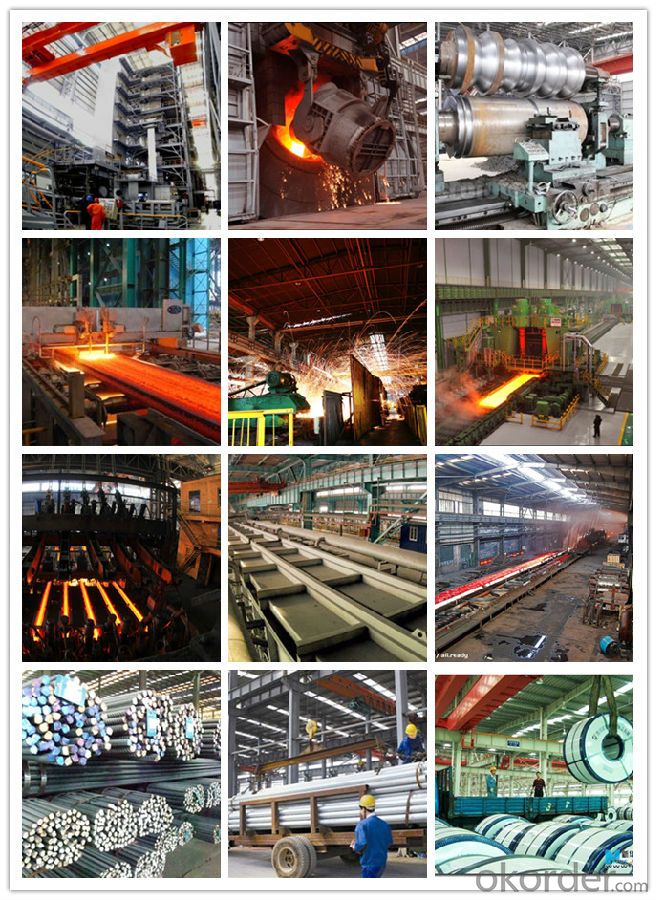
Shipping
1. FedEx/DHL/UPS/TNT for samples, Door-to-Door;
2. By Air or by Sea for batch goods, for FCL; Airport/ Port receiving;
3. Customers specifying freight forwarders or negotiable shipping methods!
Delivery Time: 3-7 days for samples; 5-25 days for batch goods.
Payment Terms
1.Payment: T/T, L/C, Western Union, MoneyGram,PayPal; 30% deposits; 70% balance before delivery.
2.MOQ: 1pcs
3.Warranty : 3 years
4.Package Informations: 1) EXPORT, In 20 feet (GW 25 ton) or 40 feet Container (GW 25 ton)
2)as customer's requirement
Why choose us?
(1) The leading exporter in China special steel industry.
(2) Large stocks for various sizes, fast delivery date.
(3) Good business relationship with China famous factories.
(4) More than 7 years steel exporting experience.
(5) Good after-sales service guarantee.
- Q: How does stainless steel contribute to the production of medical implants?
- Stainless steel contributes to the production of medical implants primarily due to its exceptional properties such as corrosion resistance, high strength, biocompatibility, and ease of sterilization. These qualities make stainless steel an ideal material for manufacturing various medical implants like joint replacements, bone plates, screws, and dental implants.
- Q: How does special steel contribute to improving product lifespan?
- Special steel contributes to improving product lifespan by offering enhanced strength, durability, and resistance to corrosion. Its unique composition and manufacturing processes result in a material that can withstand harsh conditions, heavy loads, and wear and tear over an extended period. This increased longevity and reliability of products made with special steel ultimately leads to reduced maintenance costs, less frequent replacements, and improved customer satisfaction.
- Q: How does special steel contribute to reducing greenhouse gas emissions?
- Special steel can contribute to reducing greenhouse gas emissions in several ways. Firstly, special steel is often used in the construction of energy-efficient buildings and infrastructure, which helps to reduce the energy consumption and carbon emissions associated with heating, cooling, and transportation. Additionally, special steel can be utilized in the manufacturing of more lightweight vehicles and machinery, leading to improved fuel efficiency and lower emissions. Furthermore, special steel is also employed in renewable energy technologies such as wind turbines and solar panels, helping to promote the adoption of clean energy sources and reduce reliance on fossil fuels. Overall, the unique properties of special steel enable the development of more sustainable solutions across various industries, thereby contributing to the reduction of greenhouse gas emissions.
- Q: Can special steel be used in the medical industry?
- Yes, special steel can be used in the medical industry. Special steel, specifically stainless steel, is commonly used in the manufacturing of medical devices and equipment due to its corrosion resistance, biocompatibility, and sterilization capabilities. It is used for surgical instruments, implants, prosthetics, and various other medical applications where durability, hygiene, and non-reactivity are essential.
- Q: Can special steel be used for making oil and gas industry components?
- Indeed, oil and gas industry components can be made using special steel. In the oil and gas industry, special steels like stainless steel and alloy steel are often preferred for their outstanding mechanical properties, resistance to corrosion, and ability to withstand high temperatures. These components endure harsh operating conditions, including corrosive environments, extreme temperatures, and high pressures. Special steels are specifically engineered to endure these conditions and retain their integrity and performance over time. By utilizing special steels, the oil and gas industry guarantees the dependability, longevity, and safety of vital components, including valves, pipes, fittings, and drilling equipment.
- Q: What are the different surface treatments used for special steel?
- There are several surface treatments commonly used for special steel, including galvanization, nitriding, carburizing, and plating. Galvanization involves applying a protective zinc coating to prevent corrosion. Nitriding is a heat treatment process that enriches the surface of the steel with nitrogen, enhancing hardness and wear resistance. Carburizing involves introducing carbon into the steel's surface, creating a hardened layer. Plating, on the other hand, involves covering the steel with a thin layer of another metal, such as chrome or nickel, for improved aesthetics and corrosion resistance.
- Q: How does special steel resist wear and abrasion?
- Special steel resists wear and abrasion due to its unique properties and composition. It is typically alloyed with elements like chromium, tungsten, or manganese, which enhance its hardness and toughness. These alloys form a protective layer on the surface of the steel, making it more resistant to scratching, rubbing, and erosion. Special steel also has a fine grain structure, which further contributes to its wear resistance. Additionally, heat treatment processes such as quenching and tempering can be applied to further enhance the steel's hardness and durability, making it highly suitable for applications where wear and abrasion are common.
- Q: What are the different methods of improving the strength of special steel?
- There exist various approaches that can be utilized to enhance the strength of special steel. One prevalent technique involves the process of alloying. By incorporating specific elements like manganese, chromium, or vanadium into the steel, its strength and hardness can be significantly augmented. These alloying elements form robust and stable compounds with the steel, thereby enhancing its overall strength. Another method entails heat treatment. This process entails subjecting the steel to controlled heating and cooling processes in order to modify its microstructure. For instance, quenching and tempering can be employed to increase the strength and hardness of the steel by creating a hardened martensitic structure. Additionally, precipitation hardening is a heat treatment technique that involves the formation of fine particles within the steel matrix, resulting in improved strength. Cold working is also a widely utilized technique for strengthening special steel. By subjecting the steel to plastic deformation at low temperatures, its grain structure becomes elongated, and dislocations are introduced. This leads to an increase in the strength and hardness of the steel. Furthermore, surface treatments can be implemented to enhance the strength of special steel. For instance, carburizing or nitriding can be utilized to introduce carbon or nitrogen into the surface layer of the steel, resulting in the formation of a hard and wear-resistant surface. Moreover, advancements in metallurgical technology have introduced techniques such as powder metallurgy and rapid solidification. These methods involve the production of steel with fine and homogeneous microstructures, leading to improved strength and performance. In summary, the methods for improving the strength of special steel encompass alloying, heat treatment, cold working, surface treatments, and advanced metallurgical technologies. These techniques can be customized to meet specific requirements, enabling the production of high-strength and high-performance steel for various applications.
- Q: What are the main challenges in machining special steel?
- The main challenges in machining special steel include its high hardness and toughness, which can lead to increased tool wear and reduced cutting speeds. Special steel also tends to have low thermal conductivity, making it prone to heat buildup during machining, resulting in thermal damage to the workpiece and tools. Additionally, the presence of alloying elements in special steel can cause work hardening and increased cutting forces, demanding more robust machining techniques and tools.
- Q: Can special steel be used in the printing industry?
- Yes, special steel can be used in the printing industry. It is commonly used for manufacturing various printing components such as blades, cylinders, and rollers due to its excellent durability, hardness, and resistance to wear and corrosion. Special steel can enhance the performance and longevity of printing equipment, resulting in higher printing quality and increased productivity.
Send your message to us
Special Steel S45C Carbon Structural Steel
- Loading Port:
- China main port
- Payment Terms:
- TT OR LC
- Min Order Qty:
- 30 m.t.
- Supply Capability:
- 10000 m.t./month
OKorder Service Pledge
OKorder Financial Service
Similar products
Hot products
Hot Searches
Related keywords
